Resource Center
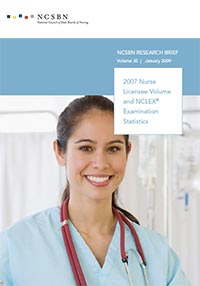
2007 Nurse Licensee Volume and NCLEX Examination Statistics (Vol. 35)
This annual publication provides national and state summary data of Member Boards’ licensure activities, as well as data on candidate performance on the NCLEX-RN and NCLEX-PN examinations. (© 2008)
2008 | Publications
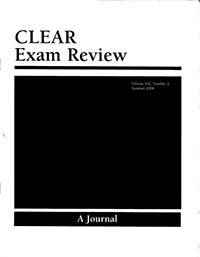
Addressing Nonresponse in Surveys
Reprint from CLEAR Exam Review, 19(2), 2008
2008 | Publications
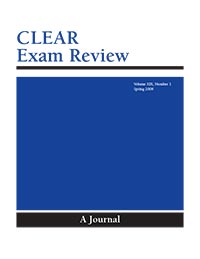
Investigation of the Item Characteristics of Innovative Item Formats
Reprint from CLEAR Exam Review, 19(1), 2008
2008 | Publications
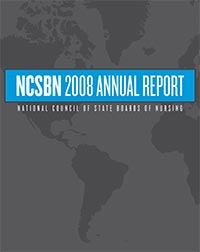
2008 NCSBN Annual Report
This annual report functions as a formal summary of NCSBN’s performance and activities during fiscal year 2008. It also provides financial information, NCLEX pass rates, member achievements and NCSBN facts.
2008 | Publications
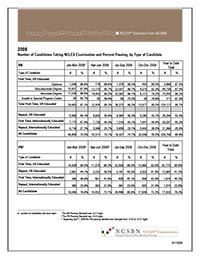
2008 NCLEX Pass Rates
Summary data for multiple categories of candidates, U.S. and international, is provided for performance on NCSBN's two nurse licensure examinations, the NCLEX-PN and NCLEX-RN.
2008 | Publications
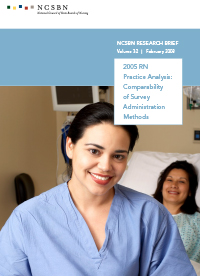
2005 RN Practice Analysis: Comparability of Survey Administration Methods (Vol. 32)
In order to improve the process of conducting practice analyses, NCSBN undertook this comparability study to investigate two different survey administration methods: the traditional paper-and-pencil, mail-based survey versus an electronic, Web-based survey. (© 2008)
2008 | Exams Research
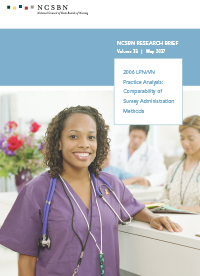
2006 LPN/VN Practice Analysis: Comparability of Survey Administration Methods (Vol. 33)
This study compares the effectiveness of two survey administration methods of researching LPN/VN practice to assist NCSBN in evaluating the validity of the test plan that guides content distribution of the licensure examination. (© 2008)
2008 | Exams Research
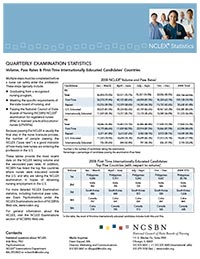
2008 NCLEX Fact Sheet
Fact sheets provide volume and pass rate data for both U.S. and international candidates. Information is provided for performance on NCSBN's two nurse licensure examinations, the NCLEX-PN and NCLEX-RN.2008 | Publications
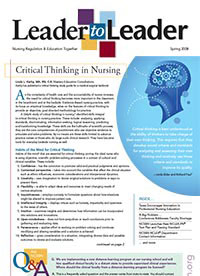
Spring 2008 Leader to Leader
- Linda L. Kerby of Mastery Education Consultations discusses the importance of critical thinking in nursing, characteristics of critical thinking and teaching critical thinking in the classroom
- Robbin Wilson and Mary Beth Thomas of the Texas Board of Nursing describe ways their board of nursing encourages innovation in nursing education
- Learn strategies for dealing with faculty shortages
2008 | Magazines
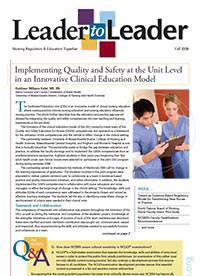
Fall 2008 Leader to Leader
- Kathleen Williams Kafel of the University of Massachusetts, Boston College of Nursing and Health Sciences reports on the collaboration between the University of Massachusetts Boston, Massachusetts General Hospital, and Brigham and Women’s Hospital to develop a clinical education model that aligns with the QSEN competencies
- Read about the preliminary report on the North Dakota Board of Nursing Nurse Faculty Intern pilot program, written by Linda Shanta, Constance B. Kalenek and Patricia Moulton of the North Dakota Board of Nursing
- Learn about the NCSBN Faculty Qualifications Committee recommendations
2008 | Magazines
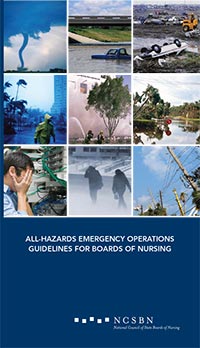
All-Hazards Emergency Operations Guidelines for Boards of Nursing
These emergency operations guidelines for boards of nursing are designed to assist boards of nursing in developing a rapid-response approach that allows for fluid continuity of core business operations in the event of a catastrophe. This guide outlines how information is gathered, channeled and assessed, when decisions are made and communicated, and what essential operations are to be maintained.
2008 | Publications
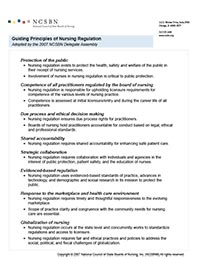
Guiding Principles of Nursing Regulation
Nursing regulation exists to protect the health, safety and welfare of the public in their receipt of nursing services–and much more. The complete scope of the guiding principles of nursing regulation are found in this paper.
2007 | Papers
